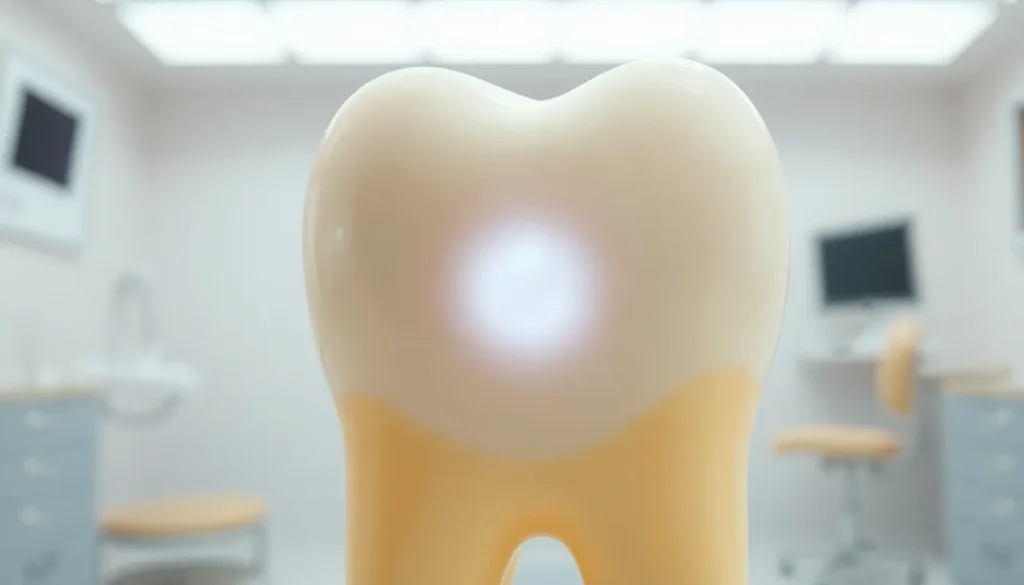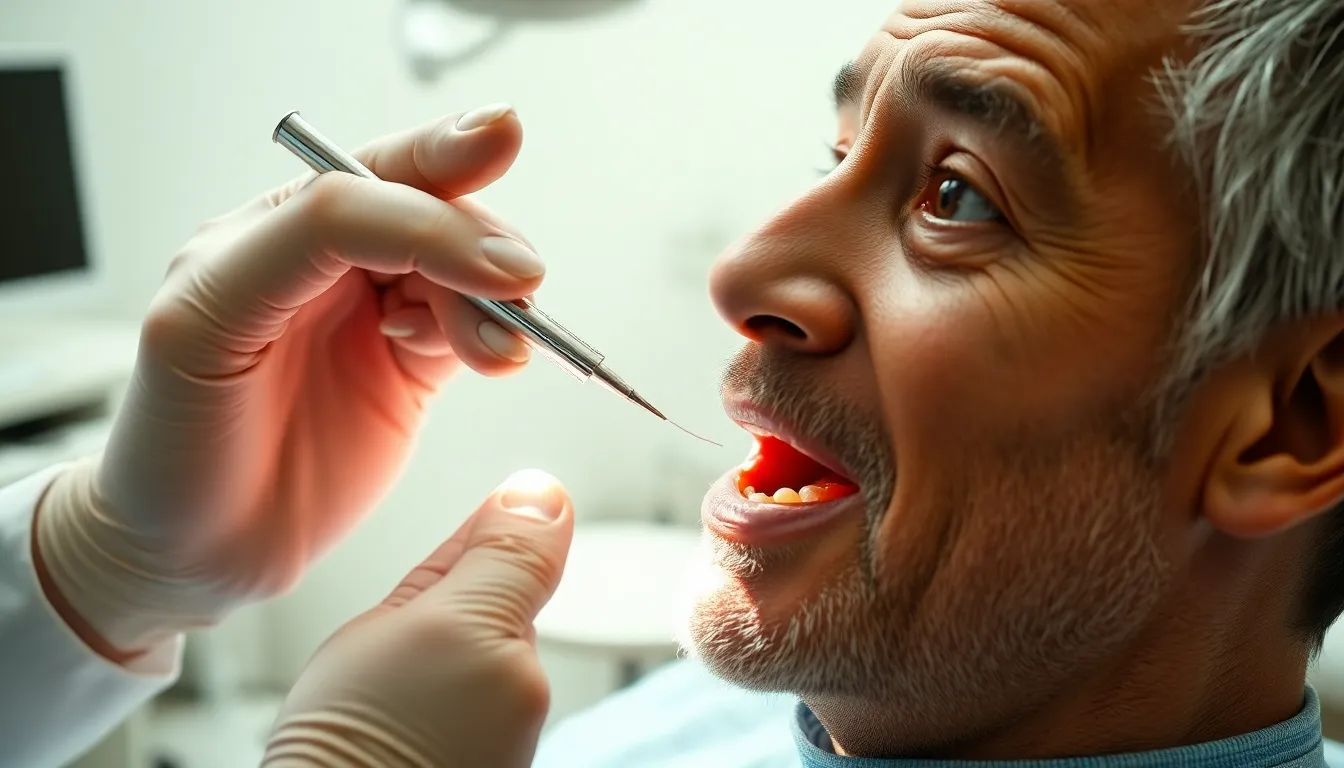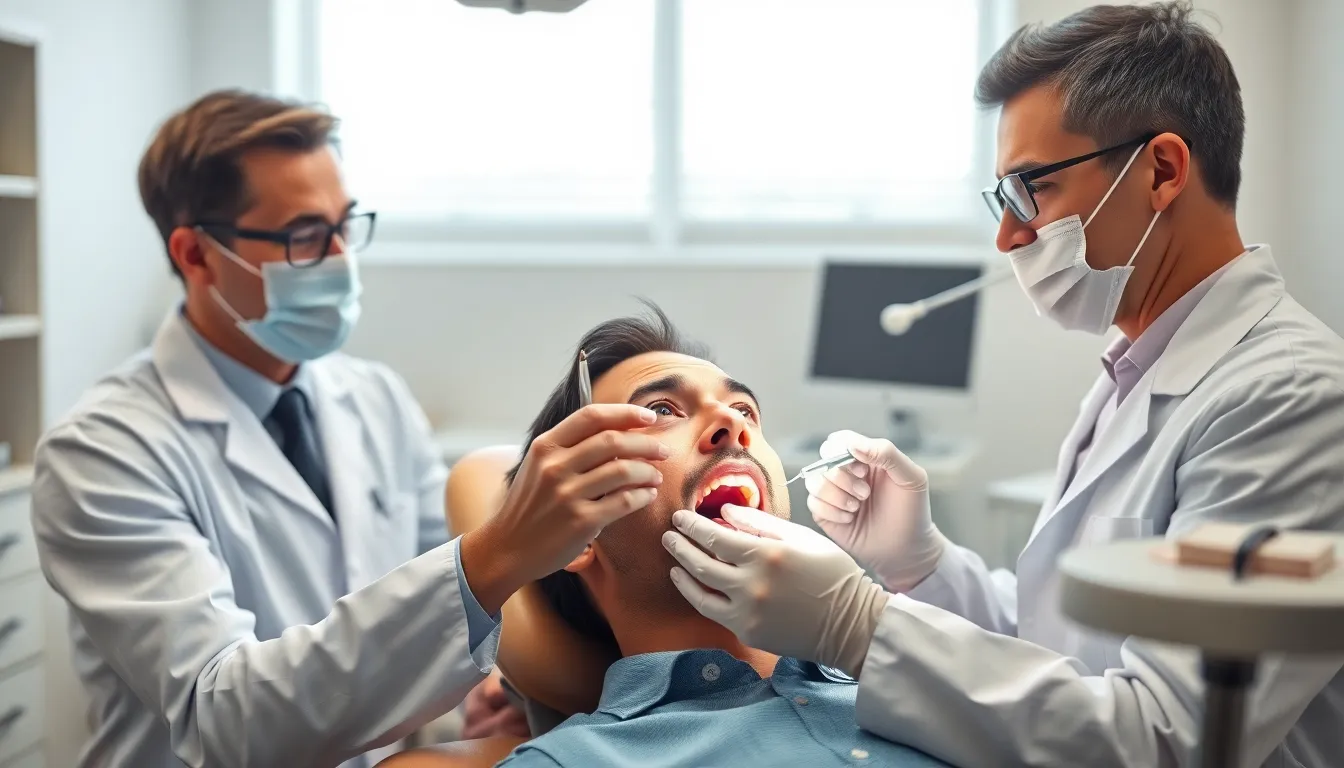Can small cavities go away on their own? It’s a question many of us have wondered while standing in front of the bathroom mirror, examining that suspicious dark spot on our tooth and hoping it might just disappear if we brush extra carefully.
Unfortunately, unlike a small cut or bruise, cavities don’t heal themselves naturally. Once tooth decay begins breaking down your enamel, the damage is permanent without professional intervention. But, there is some good news about early-stage cavities that you’ll want to know before rushing to schedule that dental appointment. Small areas of demineralization can sometimes be reversed with proper care before they develop into full-fledged cavities.
Understanding Dental Cavities: The Basics
Dental cavities represent one of the most common oral health issues worldwide, affecting people of all ages. They’re essentially areas of permanent damage to the hard surface of your teeth that develop into tiny holes.
How Cavities Form
Cavities form through a gradual process that begins with plaque buildup on your teeth. Bacteria in your mouth feed on sugars and starches from food particles, producing acids that attack tooth enamel. These acids dissolve the minerals in your tooth enamel (demineralization), creating weak spots and tiny openings. As this demineralization continues, the acid penetrates deeper into the tooth, moving next to the dentin layer beneath the enamel. Without intervention, bacteria and acid continue progressing through the tooth until reaching the inner pulp, which contains nerves and blood vessels.
Dr. Todd B. Harris often explains to patients, “I compare cavity formation to what happens when you leave a soda can on a counter for months. The acidic liquid gradually eats through the aluminum—similarly, the acids from bacteria slowly eat through your tooth structure.”
Identifying Small Cavities
Small cavities often go unnoticed because they typically don’t cause pain in their early stages. Visual signs include white spots on teeth, which indicate early demineralization, or small light brown areas on tooth surfaces. Sensitivity to sweet, hot, or cold foods sometimes occurs as cavities progress slightly deeper. Tiny holes or pits visible in your teeth represent more advanced small cavities requiring prompt attention.
A patient named Sarah recently visited our office confused about a small dark spot on her molar. “I thought it was just a stain from coffee,” she told us. Upon examination, we identified it as an early cavity that hadn’t yet caused any discomfort—a perfect example of why regular dental checkups matter for catching these issues before they worsen.
Can Small Cavities Go Away on Their Own?

Small cavities in their earliest stage, limited to the enamel, can sometimes reverse without drilling through a process called remineralization. This natural repair mechanism works by restoring minerals that have been lost from tooth enamel due to acid produced by bacteria.
The Truth About Cavity Reversal
Remineralization effectively addresses very early decay (incipient lesions) confined to the enamel layer. These early-stage cavities can repair themselves as minerals from saliva and fluoride from toothpaste rebuild the enamel surface. Once decay progresses beyond the enamel into the dentin layer, but, the cavity can’t heal on its own and requires professional dental treatment.
Research in regenerative dentistry shows promising developments for future cavity treatment. Scientists at King’s College London have discovered that certain medications, including the anti-Alzheimer’s drug Tideglusib, may activate dental pulp stem cells to regenerate dentin and support tooth repair. Even though these exciting laboratory advances, these regenerative methods aren’t yet available in clinical settings.
Dr. Harris often tells patients, “I’ve seen countless cases where catching decay early made all the difference. One patient noticed a small white spot on her front tooth and immediately scheduled an appointment. Through aggressive remineralization therapy, we completely reversed the early decay, saving her from needing a filling.”
The Role of Remineralization
Remineralization relies on good oral hygiene practices to be effective. Brushing with fluoride toothpaste twice daily, flossing regularly, and using antibacterial mouthwash create conditions favorable for enamel repair. Your diet plays a crucial role too—consuming calcium-rich foods provides necessary minerals for enamel restoration.
Reducing sugar intake significantly lowers acid production by oral bacteria, preventing further enamel erosion. Fluoride acts as a catalyst in this process by strengthening existing enamel and encouraging natural repair mechanisms. Many dentists recommend fluoride treatments for patients showing signs of early enamel demineralization.
The remineralization process works best when implemented at the first sign of trouble. White spots on teeth often indicate mineral loss and serve as an early warning that intervention is needed. Regular dental checkups enable professionals to identify these spots before they develop into cavities requiring more invasive treatment.
Early Cavity Treatment Options

Early cavity treatment options offer minimally invasive approaches to address tooth decay before it requires more extensive procedures. These treatments focus on strengthening tooth enamel and preventing further deterioration of affected areas.
Fluoride Treatments
Fluoride treatments effectively strengthen tooth enamel and accelerate remineralization, stopping cavities from progressing during their initial stages. Professional fluoride applications at your dentist’s office deliver a concentrated dose that provides significantly more protection than regular toothpaste. Your daily oral care routine should include fluoride-containing toothpaste and mouth rinses to continuously support the remineralization process and prevent early decay from advancing. Many patients experience noticeable improvements in enamel strength after consistent fluoride therapy, especially when caught before physical holes form in the tooth structure.
Dental Sealants
Dental sealants create a protective barrier on chewing surfaces of back teeth, blocking bacteria and food particles from accumulating in vulnerable grooves. The application process takes only minutes per tooth and involves painting a thin, plastic coating onto clean, dry tooth surfaces that quickly hardens with a special curing light. Your molars and premolars benefit most from sealants due to their complex surface anatomy that often traps food debris. Sealants serve primarily as preventive measures rather than treatments for existing cavities, yet they’ve proven highly effective at reducing cavity risk by up to 80% in the first two years after application. Children and teenagers frequently receive sealants as part of comprehensive preventive care, though adults with cavity-prone teeth can benefit equally from this protective measure.
Home Remedies and Prevention Strategies

While moderate to advanced cavities require professional treatment, early-stage decay might be addressed through consistent home care routines and preventive measures. These strategies focus on strengthening your enamel and creating an environment that supports natural remineralization.
Proper Oral Hygiene Techniques
Brushing with fluoride toothpaste twice daily provides essential minerals that support enamel repair and help arrest early decay. Your brushing technique matters—use gentle circular motions rather than aggressive back-and-forth scrubbing that can damage enamel. Floss daily to remove plaque and food particles from between teeth, areas your toothbrush can’t reach effectively. Consider adding an alcohol-free fluoride mouthwash to your routine for additional protection, especially if you’re at higher risk for cavities.
Dr. Harris notes, “I’ve seen patients completely halt the progression of incipient lesions simply by improving their brushing technique and consistently using fluoride products. One patient came in with several white spots indicating early demineralization, and after three months of enhanced oral hygiene, those spots had noticeably diminished.”
Replace your toothbrush every 3-4 months or sooner if bristles become frayed. Electric toothbrushes can be more effective at removing plaque than manual brushing for many people. Timing matters too—brush for a full two minutes and wait 30 minutes after eating acidic foods before brushing to avoid damaging temporarily softened enamel.
Diet Modifications for Cavity Prevention
Your dietary choices significantly impact cavity development and potential reversal. Reducing sugar consumption limits the fuel available to decay-causing bacteria in your mouth. These bacteria convert sugars into acids that attack enamel, so cutting back on sugary snacks and beverages creates a less hostile environment for your teeth.
Consuming dairy products like cheese, milk, and yogurt provides calcium and phosphates that strengthen teeth. These foods also stimulate saliva production, which naturally neutralizes acids and delivers minerals to your enamel. Crunchy, fibrous fruits and vegetables like apples, carrots, and celery act as natural tooth cleaners, stimulating saliva flow while physically removing plaque during chewing.
Drinking water throughout the day, especially after meals, helps wash away food particles and dilute acids. Tap water containing fluoride offers additional protective benefits. Green and black teas contain compounds that suppress harmful bacteria, potentially reducing their ability to produce damaging acids.
When to See a Dentist

Recognizing when to seek professional dental care is crucial for addressing small cavities before they develop into more serious problems. Early intervention by a dentist can prevent further decay and potentially save your tooth from more invasive procedures.
Warning Signs That Require Professional Attention
Several key symptoms indicate it’s time to schedule a dental appointment. Sensitivity to hot, cold, or sweet foods often signals that decay has penetrated the enamel. Visible dark spots or holes on your teeth represent advanced decay that requires professional treatment. Persistent toothache or pain when biting indicates the cavity may have reached deeper layers of your tooth. Bad breath or an unpleasant taste in your mouth can also result from bacterial growth in decayed areas. These symptoms suggest the decay has progressed beyond the stage where natural remineralization is effective.
Dr. Todd B. Harris notes, “Many patients come to me only after experiencing pain, but by then, the cavity has typically progressed significantly. I’ve treated many patients who could have avoided fillings if they’d responded to earlier warning signs like sensitivity or visible discoloration.”
Professional Treatment for Small Cavities
Modern dentistry offers minimally invasive options for treating small cavities while preserving healthy tooth structure. Resin infiltration has emerged as an excellent treatment for small cavities between teeth. This procedure cleans the decay area with a gel then fills it with liquid resin that’s cured with light—no drilling or anesthesia required. Your dentist can perform this conservative treatment to halt decay progression while maintaining the integrity of your natural tooth.
Promising developments in regenerative dentistry are exploring ways to stimulate your tooth’s own repair mechanisms. Dental pulp stem cells can produce dentin to repair damage under certain conditions. Medications like Tideglusib, originally developed for Alzheimer’s disease, have shown potential in activating these natural repair processes. Though these approaches remain experimental, they represent exciting possibilities for future cavity treatment that works with your body’s natural healing abilities.
Conclusion
While small cavities can’t truly “go away” on their own once decay has formed a hole in your tooth the earliest stages of decay can be reversed through remineralization. This natural process works only for demineralization limited to the enamel layer.
For optimal dental health prioritize prevention through good oral hygiene fluoride use and a tooth-friendly diet. Don’t wait for pain to develop as this typically signals advanced decay requiring more invasive treatment.
Regular dental checkups remain your best defense against cavities allowing professionals to spot and treat problems when they’re still small. Though promising research in regenerative dentistry offers hope for future treatments today’s reality requires prompt attention to any signs of decay.
Remember early intervention is always less painful and less expensive than waiting until a small problem becomes a big one.
Frequently Asked Questions
Can small cavities heal on their own?
Small cavities cannot completely heal on their own. However, early-stage cavities (areas of demineralization) can sometimes be reversed through remineralization, where minerals from saliva and fluoride help rebuild enamel. Once decay progresses beyond the enamel into the dentin layer, professional dental treatment becomes necessary. Unlike minor cuts or scrapes on your skin, tooth decay requires intervention.
What are the first signs of a cavity forming?
Early cavity signs include white spots or small brown areas on teeth, sensitivity to hot, cold, or sweet foods, and occasional discomfort when biting down. Many small cavities don’t cause pain initially, making them easy to miss. Regular dental checkups are crucial for early detection, as dentists can spot decay before symptoms become noticeable.
How does the remineralization process work?
Remineralization occurs when minerals like calcium and phosphate from saliva redeposit into weakened enamel areas. Fluoride accelerates this process by attracting these minerals to damaged spots, strengthening enamel, and making it more resistant to acid attacks. This process is effective only for very early decay confined to the enamel surface and requires consistent oral hygiene with fluoride toothpaste.
What role does diet play in preventing cavities?
Diet significantly impacts cavity prevention. Limiting sugary and acidic foods reduces the fuel bacteria need to produce enamel-damaging acids. Foods rich in calcium and phosphorus (dairy products, nuts, lean meats) help strengthen teeth. Crunchy fruits and vegetables stimulate saliva production, which naturally cleanses teeth and delivers minerals for remineralization. Drinking water, especially fluoridated water, supports overall oral health.
When should I see a dentist about a potential cavity?
See a dentist if you notice tooth sensitivity to temperature or sweetness, visible dark spots or holes, any persistent toothache, or unexplained bad breath. Don’t wait until you experience pain, as this often indicates advanced decay requiring more invasive treatment. Regular six-month checkups allow dentists to catch and treat decay in its earliest stages.
What treatments are available for small cavities?
Small cavities can be treated with minimally invasive options like fluoride treatments to strengthen enamel and accelerate remineralization. Dental sealants provide a protective barrier for vulnerable teeth surfaces. For slightly more advanced decay, resin infiltration can stop progression while preserving healthy tooth structure. Traditional fillings are used when decay has created a definite cavity requiring removal.
How effective are fluoride treatments for stopping early decay?
Professional fluoride treatments are highly effective for arresting early decay. They deliver a concentrated dose of fluoride that’s significantly stronger than what’s in regular toothpaste. These treatments can strengthen weakened enamel, reverse early demineralization, and prevent cavity formation. Studies show professional fluoride applications can reduce cavity development by 30-40% when applied regularly.
Are there any new developments in cavity treatment?
Promising developments in regenerative dentistry include medications like Tideglusib that may activate dental pulp stem cells to regenerate dentin naturally. Researchers are also exploring bioactive materials that promote the body’s natural healing processes and remineralization technologies that more effectively rebuild damaged enamel. However, most of these approaches remain in research phases and aren’t yet available in clinical settings.







